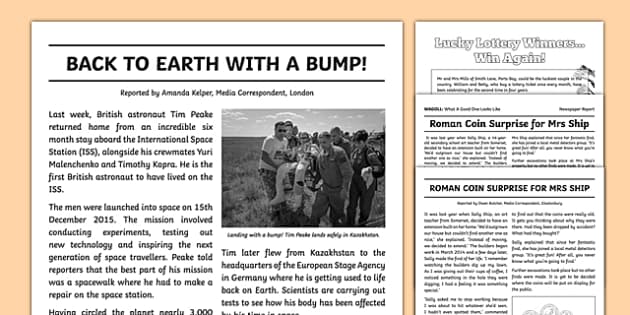Some Ideas on News Articles You Need To Know
Table of ContentsTop Guidelines Of News Articles8 Simple Techniques For News ArticlesThe Ultimate Guide To News ArticlesEverything about News ArticlesThe Basic Principles Of News Articles
Great knowledge of various topics provides students an affordable edge over their peers. Also though electronic and social networks are easily easily accessible, we must not neglect exactly how important it is to read the newspapers. Moms and dads need to try and inculcate the behavior of reading a paper as a day-to-day routine to continue the heritage of the adored print medium.Information stories also have at the very least one of the complying with crucial qualities loved one to the desired audience: closeness, prestige, timeliness, human interest, peculiarity, or consequence.
Within these limits, information stories likewise aim to be thorough. Among the bigger and more highly regarded newspapers, fairness and equilibrium is a significant aspect in offering info.
Papers with an international audience, for instance, often tend to make use of an extra formal style of writing. News Articles.; usual design overviews consist of the and the United States Information Design Publication.
News Articles Things To Know Before You Buy
As a rule, reporters will not use a lengthy word when a short one will certainly do. They make use of subject-verb-object building and construction and vivid, active prose (see Grammar). They provide stories, examples and allegories, and they hardly ever depend on generalizations or abstract concepts. News writers attempt to prevent using the same word more than when in a paragraph (occasionally called an "resemble" or "word mirror").
Nonetheless, headlines occasionally leave out the subject (e.g., "Leaps From Boat, Catches in Wheel") or verb (e.g., "Feline woman lucky"). A subhead (additionally subhed, sub-headline, subheading, caption, deck or dek) can be either a secondary title under the major headline, or the heading of a subsection of the write-up. It is a heading that comes before the major text, or a group of paragraphs of the major text.

of an article subject, informant, or interviewee), it is described as a drawn quotation or pull quote. Added signboards of any of these kinds may appear later in the article (specifically on subsequent pages) to lure further analysis. Journalistic sites in some cases make use of computer animation techniques to switch one signboard for an additional (e.g.
Get This Report on News Articles
Such signboards are also made use of as guidelines to the short article in other areas of the publication or site, or as advertisements for the piece in other magazine or sites. News release of the Swiss government. Common structure with title, lead paragraph (recap in bold), various other paragraphs (information) and call details.

Instance of a hard-lead paragraph NASA is suggesting another area project. The budget demands approximately $10 billion for the job.
The NASA statement came as the firm requested $10 billion of appropriations for the project. An "off-lead" is the second most vital front web page information of the day. The off-lead shows up either in the leading left edge, or straight below the lead on the right. To "bury the lead" is to begin the write-up with history details or information of additional importance to the visitors, forcing them to learn more deeply into an article than they ought to have to in order to find the crucial points.
News Articles Fundamentals Explained
Typical use is that or 2 sentences each develop their very own paragraph. Reporters generally describe the organization or framework of an information story as an inverted pyramid. The necessary and most fascinating components of a story are put at the start, with sustaining info adhering to in order of reducing significance.
It enables people to explore a subject to only the deepness that their interest takes them, and without the imposition of details or subtleties that they could think about unimportant, yet still making that information available to much more interested readers. The inverted pyramid framework likewise enables write-ups to be trimmed to any kind of arbitrary length during format, to fit in the space readily available.
Some authors start their stories look here with the "1-2-3 lead", yet there are numerous kinds of lead readily available. This layout inevitably starts with a "5 Ws" opening paragraph (as explained above), adhered to by an indirect quote that offers to sustain a major element of the very first paragraph, and after that a straight quote to support the indirect quote. [] A twist can refer to several things: The last tale in the information broadcast; a "delighted" story to finish the program.
Longer articles, such as publication cover short articles and the items that lead the within sections of a paper, are understood as. Function tales differ from straight information in several means.
Unknown Facts About News Articles
A feature's first paragraphs usually associate an interesting moment or occasion, as in an "anecdotal lead". From the details of a person or episode, its sight quickly broadens to generalizations regarding the story's subject.

The Editor's Tool kit: A Recommendation Guide for click reference Beginners and Professionals (2001) Allan M. Siegal and William G. Connolly. The New York City Times Guidebook of Style and Usage: The Authorities Design Guide Utilized by the Writers and Editors of the World's The majority of Reliable Newspaper (2002) M. L. Stein, Susan Paterno, and R.